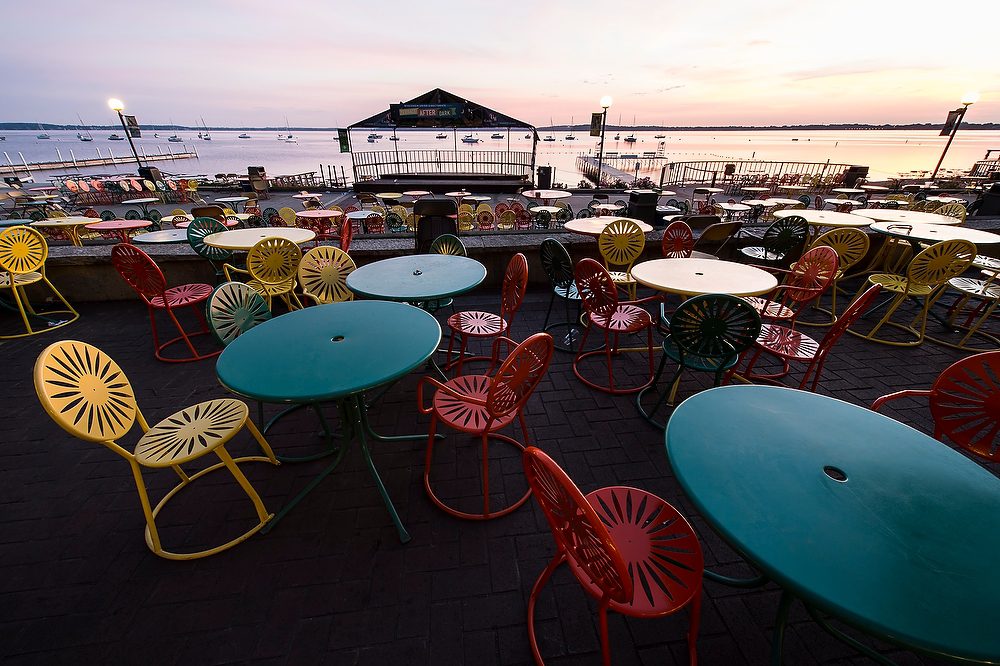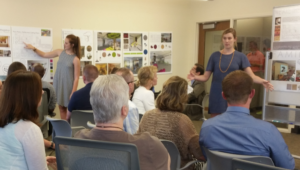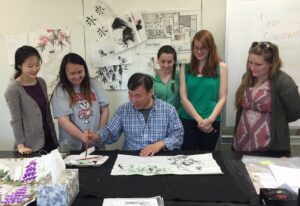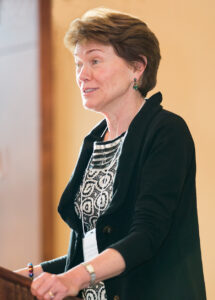
Everybody’s in back-to-school mode, but let’s take a moment to remember the amazing experiences we had this summer.

About 13,000 students enrolled in UW-Madison’s 2015 Summer Term. Some were motivated by the opportunity to complete their degrees faster. Others sought a hands-on experience to prepare for career success. For these and other reasons, Summer Term is becoming a bigger part of the distinctive UW learning experience and an integral part of the university’s growth.
Many who studied in Madison this summer participated in one-of-a-kind activities, such as listening to music on the Memorial Union Terrace or sailing on Lake Mendota. While enjoying the relaxing atmosphere, they applied themselves to rigorous courses offered in compressed three- to eight-week sessions.
Many courses provided practical experiences that set the stage for career success. In Civil Engineering 498, for example, budding civil and environmental engineers organized a construction project. In Design Studies 501, students redesigned a workspace at the Office of the Registrar. And in one of many summer internship opportunities, students in Political Science 478 learned about international affairs in Washington, D.C., working with agencies, nonprofits, and embassies.

In more than 100 online courses, students had a UW-Madison Summer Term experience from wherever they were around the world. In Communication Sciences and Disorders 210, students built an interactive brain atlas while learning how the brain controls functions related to communication. Those enrolled in Life Sciences Communication 251 explored emerging technologies at the intersection of science, politics, and society, looking at how people form opinions on these topics. Since 2013, enrollment in online Summer Term courses has increased 82 percent.
“We know that Summer Term courses can be financially beneficial to students, helping them earn their degrees faster and progress more quickly into their careers,” says Sarah C. Mangelsdorf, UW-Madison Provost and Vice Chancellor for Academic Affairs. “Summer Term also helps the university open its doors to new audiences, including people looking for flexible educational experiences that fit more easily into their busy schedules. We are looking at strategies to grow and enhance Summer Term in ways that will benefit our learners and our university.”

The Wisconsin Idea in action
Traditional students weren’t the only ones taking advantage of Summer Term courses, as UW-Madison continued to champion the Wisconsin Idea: using university resources to benefit the state. In labs across campus, professors did cutting-edge research throughout the summer, often with students’ help. In forests, fields, and factories across the state, citizens applied UW knowledge to solve practical challenges. And University Summer Forums welcomed community members into free academic courses covering chemistry and Chinese brush painting.
“Summer Forums represent the storied Wisconsin Idea in action,” says Mangelsdorf. “Community members studied with UW-Madison professors who are experts in their field. They also engaged with current undergraduates, making for a lively, rich learning environment.”
Building on the momentum of this year’s successful Summer Term, the university is embracing new strategies to improve the student experience, serve new audiences, achieve efficiencies, and increase revenue. The first step will be a new summer funding model—one that aligns school and college budgets with growth in instructional activity. More information will be shared with faculty and staff in the coming weeks and months, as campus prepares to implement the first phase of this new model with the 2016 Summer Term.